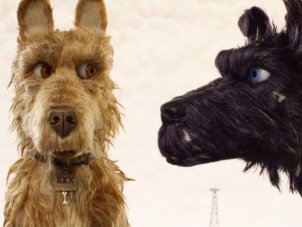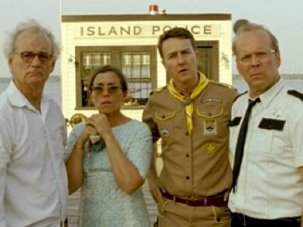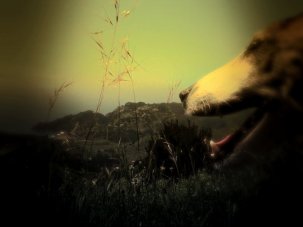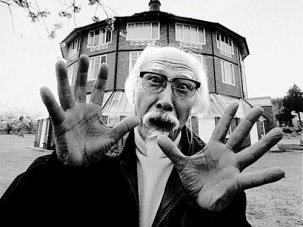Many auteur directors create films that seem to exist in pocket universes as self-contained, circumscribed and minutely thought-through as the virtual-reality environment of a computer game or the fantasy setting of a paperback trilogy. Wes Anderson’s early films Bottle Rocket (1996) and Rushmore (1998) took place in more or less the real world, but concerned fantasists who tried to make their imaginings concrete (or at least papier-mâché) reality.
USA/Germany 2018
Certificate PG 101m 1s
Director Wes Anderson
Voice cast
Chief Bryan Cranston
Rex Edward Norton
Boss Bill Murray
Duke Jeff Goldblum
Kobayashi Atari Rankin Koyu
[2.35:1]
UK release date 30 March 2018
Distributor 20th Century Fox International (UK)
isleofdogsmovie.com
► Trailer
Since then, he has voyaged deeper into the universes created for each of his films and found avatars in visionaries and explorers like Max Fischer (Jason Schwartzman), the schoolboy theatrical impresario of Rushmore, and Steve Zissou (Bill Murray), the Jacques Cousteau figure in The Life Aquatic with Steve Zissou. Moonrise Kingdom (2012) was set on an imaginary island and came – like every fantasy trilogy since Tolkien – with an invented map. The Grand Budapest Hotel (2014), a Russian doll of shaggy-dog stories, embedded human eccentrics in an imaginary institution (and country) visited over decades.
Anderson’s secondary worlds aren’t permanent idylls but places in the throes of sometimes cataclysmic change. With Fantastic Mr Fox (2009), Anderson’s earlier venture into stop-motion animation (and his only film based on a pre-existing source), the director was at last able to control all the variables – in this mode, every single throwaway prop has to be made from scratch.
Isle of Dogs – set in a near-future Japan, where the mayor of Megasaki has ordered that all the city’s dogs be exiled to an offshore refuse dump – shows the influence of everyone in the field from Jan Svankmajer to Nick Park, and makes extensive use of a quirk discovered by Willis H. O’Brien on King Kong (1933) – that the animators’ fingers cause furry puppets to ripple in a manner approximating a constant light breeze. Even more than most of Anderson’s films, Isle of Dogs will attract repeat viewings because it is so densely packed with sly visual gags and quietly hilarious minor characters (such as Tilda Swinton’s Oracle Dog, whose mystic reputation is down to quoting TV news headlines as if they were prophecies) that a single watch won’t pick up half the prizes. Many one-off images are startlingly beautiful, yet oddly melancholy, often finding fascinating things to see in literal detritus – the aftermath of a plane crash on a sea of waste paper, with the wreck at the centre of a burned circle… or the clouds of dust kicked up whenever animals or humans need to have an old-fashioned cartoon-style mêlée.

Like Guy Maddin (The Forbidden Room) and Anna Biller (The Love Witch), Anderson often looks to an eclectic variety of film sources, making collages out of unlikely bits and pieces of popular and high culture. Here, the dominant influence is Japanese cinema, with explicit nods to Akira Kurosawa (music stings and bushido cool from Seven Samurai and echoes of the rubbish-dump community of Dodes’ka-den) and the science-fiction films of Honda Ishiro (with the space-suited boy pilot and steel-frilled mecha-dogs).
But in having dogs as most of the main (and anglophone) characters, Anderson can’t avoid evoking Lady and the Tramp (1955) and One Hundred and One Dalmatians (1960), albeit with the analogues of show dog Lady and street dog Tramp – voiced by Scarlett Johansson and Bryan Cranston – conducting themselves like the mysterious, slightly fey outlaws of Suzuki Seijun’s films. A supporting pack of wry, chatty cast-off dogs (voiced by Anderson regulars Murray, Ed Norton, Bob Balaban and Jeff Goldblum) come across as canine versions of the crews of mostly merry misfits of The Royal Tenenbaums (2001) and The Life Aquatic.
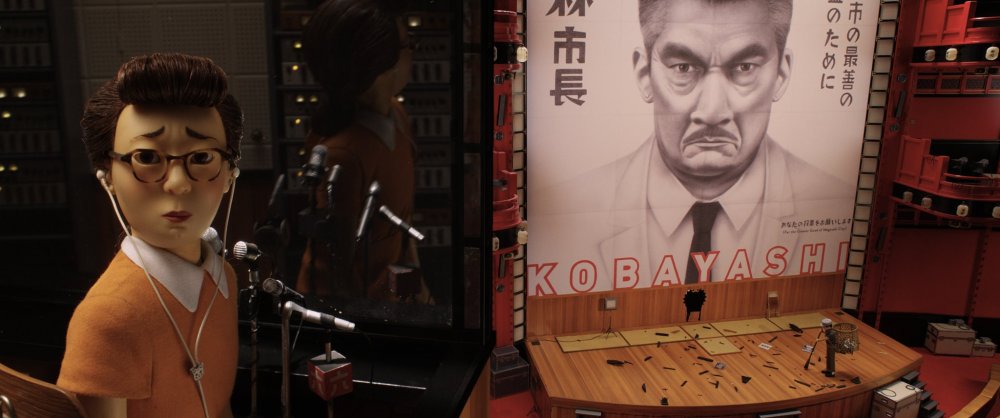
Like many Anderson films, Isle of Dogs has a non-linear story, an omniscient narrator (Courtney B. Vance), onscreen chapter headings and an array of distancing devices – all the Japanese characters speak mostly in unsubtitled Japanese, but translators and translation devices pop up to keep the audience up to date – which theoretically draw attention to the packaging rather than the contents. However, this is such a labour of love, drawing so much from its creator’s enthusiasm for all manner of things – not least, of course, dogs – that it avoids disappearing inside its magnificent artifice.
A speech that Cranston’s stray Chief gives about literally biting the hand that fed him when he muffed a chance at a good home is among the most perfectly written, staged and played scenes in recent cinema – it would be a surefire Oscar clip if awards had categories that could encompass achievements in this byway of cinema, where great acting is as much down to the hands of animators as the dialogue delivery. The trick of absurdist comedy is often to know when to take an element (here emotional, but elsewhere in the film political) so seriously that it hits home without even abandoning a fundamental ridiculousness – which turns out to be a profound reaction to the state of the real world.
-
The Digital Edition and Archive quick link
Log in here to your digital edition and archive subscription, take a look at the packages on offer and buy a subscription.






